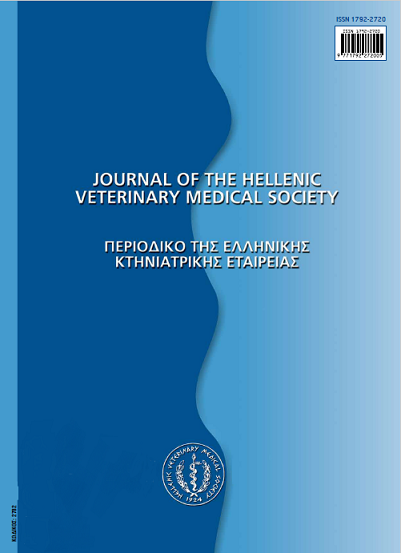Pituitary adenoma in aged rats. A case report

Abstract
The prevalence of neoplastic disease in the rat is well defined, because this species has been routinely used for decades in large-scale carcinogenic, aging and toxicological studies. Stock and strain-specific differences in the prevalence of some types of tumors are well documented. Pituitary adenoma is a neoplastic lesion which can be observed in older or aged rats of both sexes. In addition to sex, strain, diet, genetic factor, breeding history and accommodation may also play a role. Pituitary adenoma can also affect hamster, guinea pig and mice. The aim of this article is to report an incidence of pituitary adenomas, which was observed in a rat breeding colony of the Center for Experimental Surgery of the Biomedical Research Foundation of the Academy of Athens. During the clinical examination five female Wistar rats, at the age of 18 to 24 months old, expressed anorexia, weight loss, ataxia and bilateral blindness. At necropsy, the pituitary gland was enlarged with lobulations, often dark red to brown and hemorrhagic in appearance. In some cases there was a marked compression of the overlying mesencephalon. Histological examination with haematoxylin-eosin were observed cords and nests of glandular cells bound by strands of connective tissue, with an abundant capillary network. On immunohistochemical examination were observed strong positive reaction of synaptophysin. Findings were similar to pituitary adenoma. Pituitary adenoma is a serious non-reversible disease leading to the death of the animal. Laboratory animals with pituitary adenomas can be used as models in research of human pituitary adenoma.
Article Details
- How to Cite
-
KATSIMPOULAS, M., FOTEINOU, M., PARONIS, E., ALEXAKOS, P., & KOSTOMITSOPOULOS, N. (2018). Pituitary adenoma in aged rats. A case report. Journal of the Hellenic Veterinary Medical Society, 59(1), 58–63. https://doi.org/10.12681/jhvms.14948
- Issue
- Vol. 59 No. 1 (2008)
- Section
- Case Report

This work is licensed under a Creative Commons Attribution-NonCommercial 4.0 International License.
Authors who publish with this journal agree to the following terms:
· Authors retain copyright and grant the journal right of first publication with the work simultaneously licensed under a Creative Commons Attribution Non-Commercial License that allows others to share the work with an acknowledgement of the work's authorship and initial publication in this journal.
· Authors are able to enter into separate, additional contractual arrangements for the non-exclusive distribution of the journal's published version of the work (e.g. post it to an institutional repository or publish it in a book), with an acknowledgement of its initial publication in this journal.
· Authors are permitted and encouraged to post their work online (preferably in institutional repositories or on their website) prior to and during the submission process, as it can lead to productive exchanges, as well as earlier and greater citation of published work.


